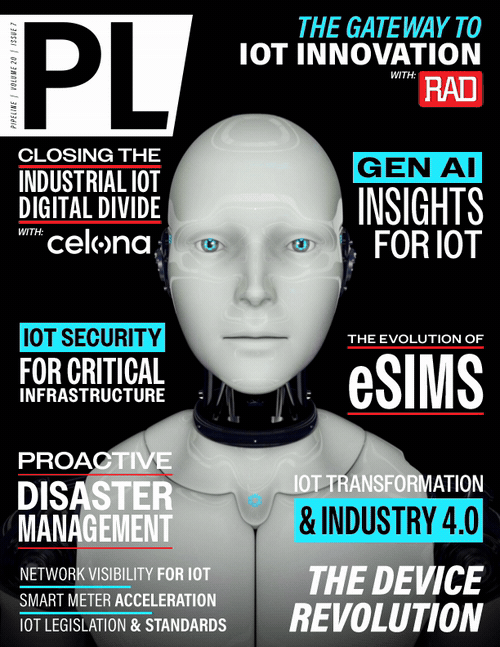Letter from the Editor - July 2024

The proliferation of connected devices is changing everything. It’s changing our energy grid, helping enterprises become more efficient, improving agriculture, transforming industries, protecting our critical infrastructure, and much more. I can even check the temperature of my steak with my watch. Backed by billions of devices and trillions of dollars, connected things is where it’s at, now and for the foreseeable future. It’s an all but pre-drawn conclusion, but are we ready? Probably not.
The problem stems from the ambiguity of IoT. Technically any connected thing is part of the IoT. But the device, or thing, is just one layer within the innovation stack. The device, application, security and network considerations vary a great deal depending on the specific use case. The resulting fragmentation has become difficult to manage, which is only compounded by the staggering volume of connectivity, data, and devices coming online year over year. This presents a significant opportunity, but it’s also why most market forecasters are predicting three to five times the growth for IoT services versus the connectivity itself. The larger opportunity may be helping put all these pieces together.
But, without a doubt, IoT has been a technical revolution, and we’ve seen this story play out before. Take the wheel for example. At some point in human history, we discovered that round things move easier than not round things. We determined if we put two round things together with a bar between them, we could create wheels. If we put a barrel, basket or box on top of the wheels we had a wheelbarrow, cart, or carriage. Then we could pack it full of all sorts of things and take it from one place to another. Over time, there became an infinite type of wheels, applications, and use cases that used or relied upon wheels. But each application was different. It’s not all that different with IoT, if you exclude the internet bit.
Devices were the round things. At first, they were merely mechanisms and eventually became connected to each other. Then they were connected to each other via and to the internet. This is where things got interesting. The internet was transportation. The data was the stuff inside. And, the applications are the cart and horse pulling and pushing it back and forth. But, what’s different with IoT today is that the horse is beginning to drive the carriage.
The combination of IoT, artificial intelligence (AI), and generative AI (Gen AI) is unique. Devices can talk to us and each other. They can operate independently. AI and Gen AI provide intelligence to IoT. It makes the horses smarter. But, it’s not all “off to the races” just yet and we may have jumped the gun a smidge.
We trust these things with our lives and livelihood. Our critical infrastructure, energy, and supply chains rely upon them. They monitor our health and even regulate our heart beats. They know more about us than perhaps even we do. Which makes this edition of Pipeline so significant.
In this issue of Pipeline, we take an in-depth look at IoT, the device revolution and our connected world. We start by discussing the 10 trillion-dollar IoT market opportunity with RAD, and how sensors, gateways, and applications are being combined to create intelligent IoT platforms. TCG gives us an update on how IoT legislation and standards are addressing the need for IoT cybersecurity. Nozomi Networks evaluates IoT security risks and methods to protect critical infrastructure. ST Engineering iDirect demonstrates how IoT is providing a proactive approach to disaster management. Pipeline's Dr. Mark Cummings explores the IoT insights that can be provided by Gen AI. Mobileum takes a look at roaming and steering and how AI can provide critical network visibility insights for IoT. Celona analyzes different applications of wireless connectivity for Industrial IoT (IIoT) and their implications. Digi International examines the transformational pressures of IoT, IIoT and Industry 4.0. Berg Insight reports on the growing importance of smart grid design and global acceleration of smart meter deployments. RiPSIM illustrates how the explosion of IoT and connected devices requires better eSIM automation now. All this, plus the latest enterprise and communications technology news, and more.
We hope you enjoy this and every issue of Pipeline,
Scott St. John
Managing Editor
Pipeline


















